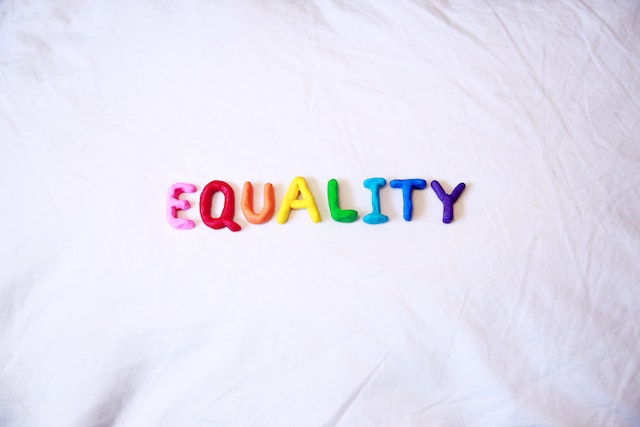What LGTB people most demand in terms of good company practices are equal labor rights, protection against harassment at work, training in LGTB matters for employees, and inclusive external communication and marketing.
Thus, the company that wants to carry out a good practice in relation to the LGBT community should have an equality plan or an internal regulation against harassment and training plans in relation to diversity. In this area, very few companies develop this type of plan specifically aimed at non-discrimination of LGBT people. On the other hand, gender equality plans for men and women are beginning to be developed and consolidated. In this manner, LGBT equality plans can contemplate gender equality plans as referents, applying the LGTB community’s own perspective (Solá and Fundació de Dones, 2019:53).

If a company wants to create a work space free of discrimination based on gender identity, gender expression or sexual orientation, it would be advisable for them to adopt the following series of measures:
• Create a safe and trusting environment for LGBT people.
A safe and trusting environment means being a space free of LGTBphobia, a space where all workers can feel safe and know their rights.
• Create a code of conduct that does not allow any discriminatory behavior.
A code of conduct or LGTB equality plan is an ordered set of measures to achieve equal treatment and opportunities for lesbian, gay, trans and bisexual people in the company (Soláand Fundació de Dones, 2019: 52).
• Promoting equal opportunities and equal treatment.
Data such as those previously discussed on the discrimination of trans women in relation to
employment opportunities are testimony to the fact that there is great inequality. A solution to this problem could be a transversal training through internal communication reaching all levels of the company such as managers or human resources managers.
• Training employees on LGBT issues in order to prevent discriminatory practices.
Training on LGBT issues has two clear objectives: raising awareness and preventing discriminatory behavior.
• Use non-sexist and inclusive language in internal and external communications.
It is necessary to prevent language from being a form of discrimination and must adapt its communication channels to use non-sexist language. In addition, the use of the correct pronouns, which is widely used by the LGTB community, is recommended.
• Take into account the needs and rights of trans people in the workplace.
The company has to take into account issues such as absences caused by consultations or the creation of mixed bathrooms, has to understand that the fact of revealing the orientation or gender identity of a worker is a personal option chosen by that same person and has the obligation to address trans people by the gender with which they identify and the name chosen (Solá and Fundació de Dones, 2019:58).

• Development of communication campaigns that help raise awareness of LGTBphobia in society.
In relation to inclusive advertising, what is demanded is the diversity of identities in advertisements. Gay men and, to a lesser extent, lesbian women tend to be the protagonists of the vast majority of LGBT-inclusive advertising, but trans people, non-binary people or bisexual people are practically non-existent in advertising.
Moreover, in most advertising campaigns, the cisheterosexual gaze is usually applied. Thisperspective is characterized by the ignorance of the reality of the community when creating a campaign aimed at the LGBT community. One of the greatest examples of this cisheterosexual perspective are the slogans that brands usually use every June 28th, such as “Love wins”. These slogans are problematic in the sense that they do not have a unitary meaning for the LGBT
community and do not represent trans people or non-binary people as their membership in the community is due to gender identity, not sexual orientation.
The aforementioned conditions can serve as a guide to carry out healthy and favorable advertising strategies for the struggle of this group and, in addition, can also serve for the approach of inclusion plans, equality or action protocols for the prevention and detection of violations of the rights of the LGTB group in the workplace.

References:
MARTÍNEZ, Ramón (2017): Lo nuestro sí que es mundial. Una introducción a la historia del movimiento LGTB en España. Barcelona, Editorial Egales.
MUÑOZ, Óscar (2019): “La diversidad LGTB en el contexto laboral en España”, Banco Santander, en: https://mpatika.com/wp-content/uploads/2019/05/La-Diversidad-LGBT-en-el-Contexto-Laboral-en-España.pdf.
RETTA, Mary (2019): “¿Cuál es la diferencia entre no binario, queer y género no conforme?”, VICE, en: https://www.vice.com/es/article/wjwx8m/cual-es-la-diferencia-entre-no-binario-queer-y-genero-no-conforme.
SOLÁ GARCÍA, Miriam; Fundació de Dones (2019): “Guía de recomendaciones para el buen trato de las personas LGTBI en el entorno laboral”, Gobierno de las Illes Balears, en: https://www.caeb.es/wp-content/uploads/2019/03/2019-02-25-GUIA-DE-RECOMENDACIONES-PARA-EL-BUEN-TRATO-DE-LAS-PERSONAS-LGTBI-EN-EL-ENTORNO-LABORAL.pdf.
Feature Photo: Foto de Alexander Grey en Pexels
Foto de Alexander Grey: https://www.pexels.com/es-es/foto/texto-de-feliz-cumpleanos-en-textil-blanco-3859982/
Foto de Anna Shvets: https://www.pexels.com/es-es/foto/puno-con-pintura-corporal-del-orgullo-gay-4557394/






